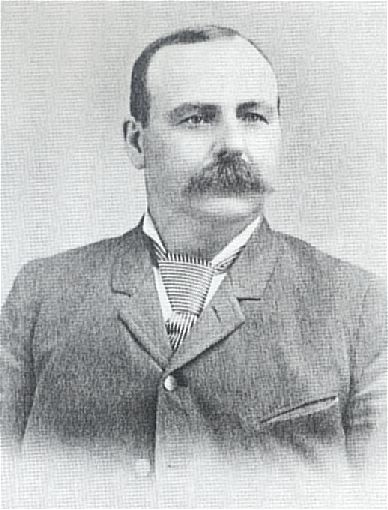 Notes
on Wallace Hardison
Notes
on Wallace Hardison Notes
on Wallace Hardison
Notes
on Wallace HardisonStewart and Hardison met in the Pennsylvania oil fields, which boomed after the country's first oil well was drilled near Titusville in 1859. The partners built up modest oil fortunes, then sold out and moved west in the 1880's to seek greater opportunities in California.
In 1890, Stewart and Hardison combined their oil assets with those of Thomas Bard, a prominent businessman, to form the Union Oil Company of California. The company was incorporated on October 17, 1890, in the small town of Santa Paula, located about 100 miles northwest of Los Angeles.
=========================
Born and raised in the heart of the first Pennsylvania field, member of a clannish family, Presbyterian to the core, and eighteen months older than Bard, Lyman Stewart's oil-field education had been broken by Civil War service. Two years after Appomattox, he and his associates, including his older brother Milton, had made a strike in northern Venango County, Pennsylvania, that quickly yielded them $1,750,000 in oil profits. Milton, a canny man with a fixation for doing cash business only, continued to follow the oil game and increased his fortune. Lyman, after being credited with a fortune of $300,000 and a weekly income of $1,000, backed a competitor to the McCormick Reaper and was flattened financially.
This was a traumatic experience for a man imbued with the mystique that material success was possible evidence of God's election for salvation, and it ingrained a fear in Lyman Stewart that foreverafter struggled with his desire for vast, fast wealth from oil. After being discharged from bankruptcy in 1873, he returned to the oil game in a small way with a family firm that caused his contact with Wallace Libby Hardison, Maine-born and ten years his junior.
Two of Hardison's older brothers had migrated to Pennsylvania and had learned the driller's trade and learned it well. They became contract drillers for the Stewarts, as well as wildcatters in their own right, and Harvey Hardison held Lyman Stewart's highest accolade, "he always left a clean hole."
=========================
Wallace Hardison was a massive man with bristling, black mustaches, an elastic, impatient stride, and a restlessly brilliant mind. Desk work and details were not for him, and he loved the hurly-burly of the oil fields almost as much as he loved good horseflesh. Quick to act, and quicker still to make decisions requiring action, he was genial, friendly, outgoing, impulsive, and generous to a fault. Espousing the Universalist faith, he lacked Stewart's compulsive piety, and he was a Republican activist, while Stewart by comparison was apolitical. Both men were most competent in the fields they knew-crude production and speculation-and both knew the parlous position of a producer at the mercy of the Rockefeller Trust's price-setting powers over crude. Neither seems to have been as vitriolic as Milton Stewart, who linked the words "Standard" and "rascal" almost automatically.
Stewart was deeply impressed by the Ex-Mission, the Sespe District, and Pico Canyon when Blake showed them to him in mid-April, 1883. He was heartened, too, by Blake's unwarranted assurance that Blake alone controlled the Ex-Mission. His telegraphed enthusiasm brought Hardison and John Irwin, a Stewart cousin and a competent driller with a nose for oil, to Santa Paula in mid-May. They were similarly impressed, and the result was the formation of Hardison, Stewart and Company (H. S. & C.) which was unincorporated but capitalized at $25,000. The Stewart family took 51 percent of its stock, Hardison and Collins, 49 percent, and Hardison became its president and general manager with Stewart serving as treasurer.
Wallace Hardison's financial straits were even more onerous than his partner's for several reasons, among them the fact that C. P. Collins was never as dependable a source of needed capital as was Milton Stewart. The main reason lay in his purchase of the surface rights to 6,300 acres of the Ex-Mission for $16,500 on November 10, 1883. This identified the Hardison family with Ventura County in a way never done by Lyman Stewart, and made the nucleus of the locally famed Santa Paula Horse and Cattle Company.